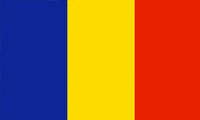Climbing

Home / Destinations / Romania
Climbing
Trekking
Kayaking
Cycling
Hiking
Train Journeys
Historical
Education
Local
Wildlife
Rating:
Offices In:
Comfort Level:
Languages:
The Danube is the second longest river in Europe, which originates in Germany and flows through many countries. The Danube leads into the Black Sea and the surrounding area around the river mouth is called the Danube Delta and is a large swampy region. It is also Europe’s largest river delta. One of the best ways to discover the river is by cruise but you can also visit the delta just as a day trip. The main attraction to visit the Danube is to see all the magnificent nature and scenic views in this area. You are free to explore the many rivers, canals, marshes, lakes and islands. This natural area is also rich in wildlife and home to the highest concentration of bird colonies in Europe, over 300 species of birds make this place their home. Egyptian pelicans come here to breed and raise their young, while Arctic geese can be found here as they escape the cold northern winters.
In the north of Romania, somewhat hidden between forested mountains and green hills, you can find the Bukovina region, arguably one of Romania’s most stunning places. Bukovina borders Ukraine to the north and Moldovia to the east. This area is unique and the perfect destination for the culture and history lovers among us because of its many medieval orthodox churches. These UNESCO fortified and painted monasteries are historically fascinating. They are decorated with beautiful colorful frescoes on both the inside and exterior of the buildings. Besides the beautifully painted churches, the region is famous for its folklore, picturesque villages and colorful population.
The beautiful Maramures with its high green hills and hospitable inhabitants is a region in northern Romania. It is situated on the northeastern part of the Carpathian mountain range. The Maramures are a unique area in Romania because it is located far enough from the sphere of influence of Bucharest and has remained relatively unchanged over the centuries. This is a stunning area is suitable for walking tours. You can hike over hills and through valleys while encountering farmers working the land and shepherds walking with their herds. You’ll also visit traditional old villages with their unique architecture and see craftsmen at work. The region is famous for its ancient wooden churches, wood sculptures on the houses, cherished traditions, good food and beautiful landscapes. It’s a cultural and outdoor destination with both scenic views and learning opportunities.
Sibiu is a city in Transylvania, in central Romania, and is one of the most important cultural centers of Romania. In the immediate vicinity of the city you will find several mountain ranges such as Cindrel Mountains and Făgăraș Mountains. Sibiu is one of those types of towns, where you can stroll around for hours. The city is charming and historical merchant houses fill the city center. Large town squares are beautiful and feature old palaces and Saxon churches and towers. The most beautiful buildings in Sibiu are located around the Piața Mare square. Another iconic sight of Sibiu are The Eyes of Sibiu, which you can find everywhere on the roofs of Sibiu's houses. All in all, Sibiu is a great destination to spend a few days and explore the city and its surroundings. There is plenty to see and do.
Nearby Berca, there are several places with a rare natural phenomenon: mud volcanoes, which are created by escaping gasses from deep underground that push up water and mud. The road to the mud volcanoes is very beautiful, especially when the sunlight shines on the mountains, which gives amazing views. The mud volcanoes are something special. It is very fascinating to see how the mud is constantly moving. These mud volcanoes are one of the most interesting natural locations in Romania. This park has been a protected area since 1924. And due to landslides, deforestation, torrential rain and mudslides, an eerie and moon-like landscape has emerged here as there is no vegetation immediately around the volcanoes.